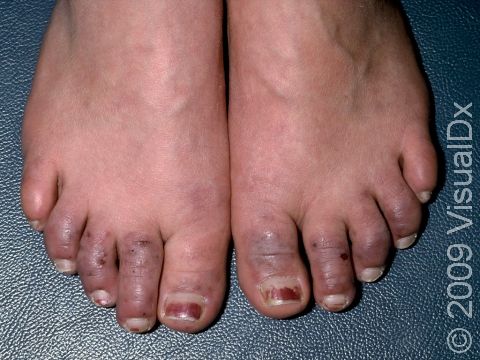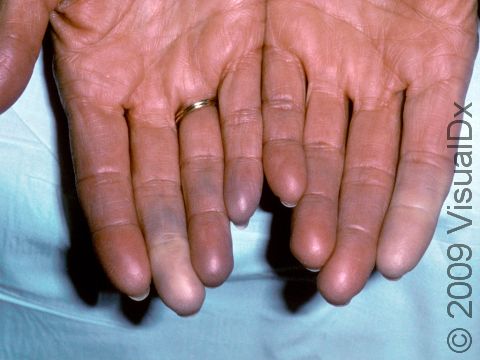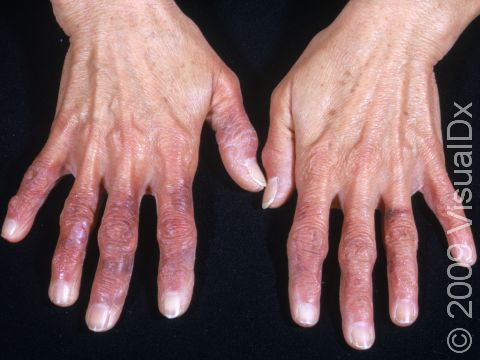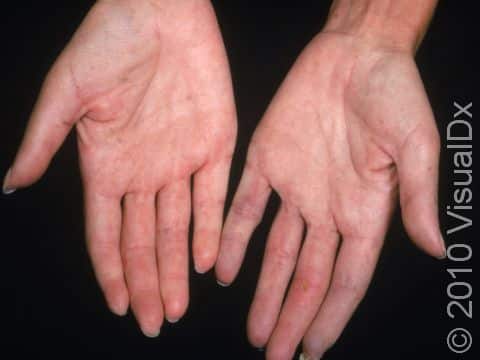Raynaud Phenomenon
Raynaud phenomenon is a disorder in which the blood vessels to the fingers and toes become constricted. The fingers and toes then change color from white to blue to red and often feel numb. Raynaud phenomenon may occur without any underlying disease, but it is sometimes seen when there is an underlying autoimmune disease, such as rheumatoid arthritis, scleroderma, and lupus, where the person’s own immune system attacks their healthy cells and tissues, causing inflammation and damage.
Other causes of Raynaud phenomenon are rarer and include repeated trauma / vibration, chemical exposures, and abnormalities in the structure of blood vessels that supply blood to that area of the body.
Who's At Risk?
Raynaud phenomenon usually affects younger-to-middle-aged women. When it affects men, it is usually seen in middle age or later in life. Raynaud phenomenon is seen in 20% of people with lupus.
Signs & Symptoms
- Raynaud phenomenon can affect the fingers and/or toes; they will feel cool and change color from white to blue to red.
- The fingers or toes may also be painful, feel numb, or tingle.
- Severe Raynaud phenomenon can result in skin ulcers (sores that are missing skin). This complication is more common in people who have both scleroderma and Raynaud phenomenon.
- People with Raynaud phenomenon may have noticeable small blood vessels (capillaries) in their fingers and toes at the base of their nails (proximal nail fold), particularly those who also have an autoimmune disease.
Self-Care Guidelines
Try to avoid triggers that cause Raynaud phenomenon, such as:
- Exposure to cold as much as possible; also avoid sudden temperature changes.
- Smoking, as this contributes to blood vessel narrowing.
- Using tools that cause strong vibrations, such as power tools or hand mixers.
If outdoors in the cold, keep hands and feet warm with gloves and hand warmers.
Try to reduce emotional stress as this can also flare the condition.
Treatments
Your medical professional will first try to determine what is causing the Raynaud phenomenon and will recommend treatment for any underlying condition, if present.
Your medical professional may prescribe:
- Oral medications such as nifedipine (a blood pressure medication), sildenafil (causes blood vessel walls to relax), or others.
- Topical nitroglycerin paste, which helps to dilate blood vessels.
Visit Urgency
See your medical professional if you notice symptoms of Raynaud phenomenon. Further testing may be needed to see if you have another medical condition that is causing your symptoms.
Trusted Links
References
Bolognia J, Schaffer JV, Cerroni L. Dermatology. 4th ed. Philadelphia, PA: Elsevier; 2018.
James WD, Elston D, Treat JR, Rosenbach MA. Andrew’s Diseases of the Skin. 13th ed. Philadelphia, PA: Elsevier; 2019.
Kang S, Amagai M, Bruckner AL, et al. Fitzpatrick’s Dermatology. 9th ed. New York, NY: McGraw-Hill Education; 2019.
Last modified on June 18th, 2024 at 1:36 pm

Not sure what to look for?
Try our new Rash and Skin Condition Finder





